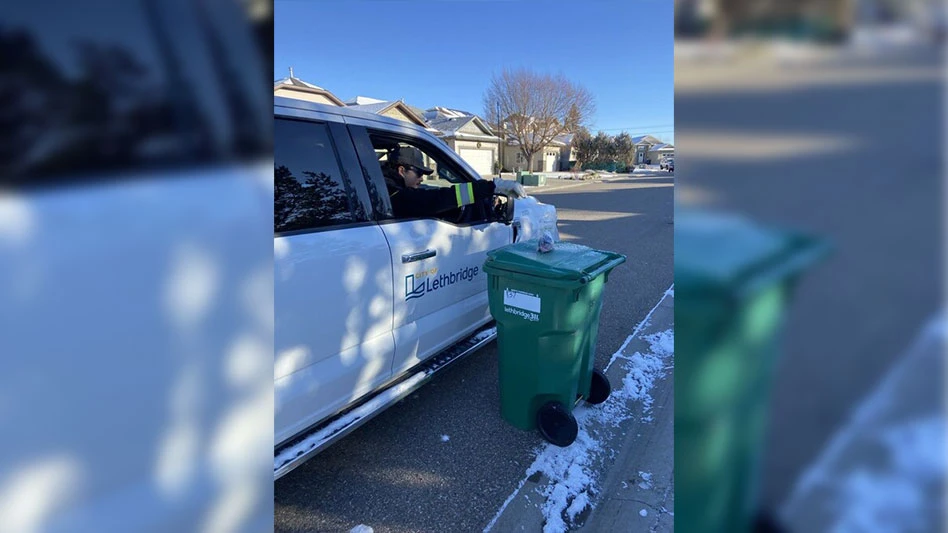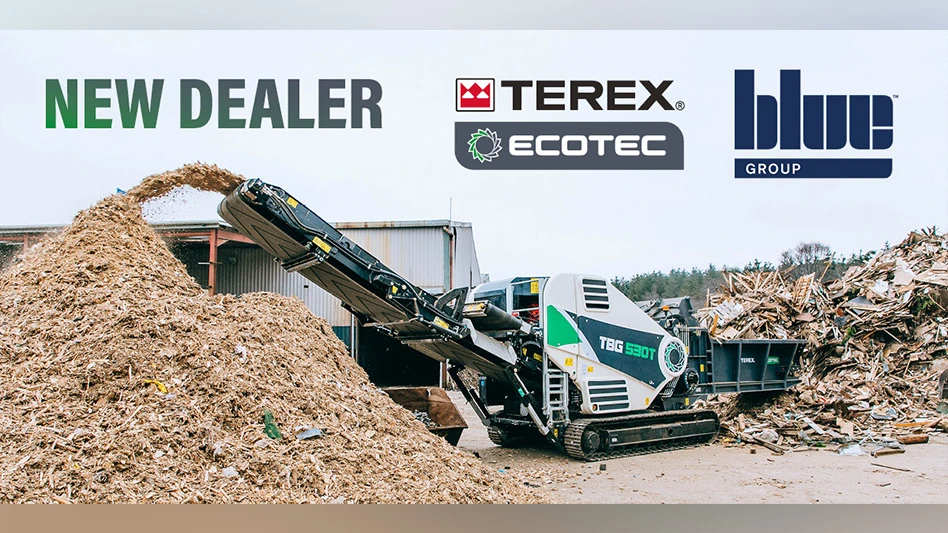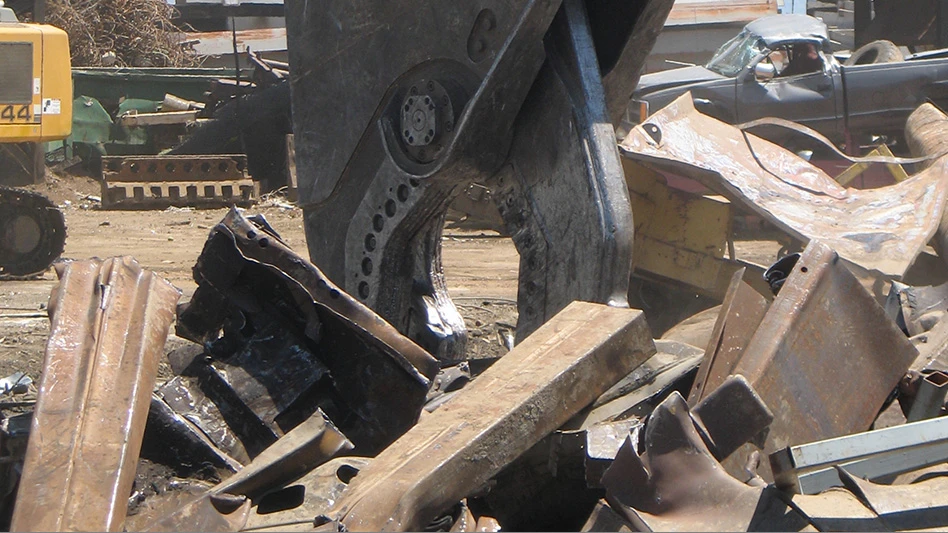
Logo courtesy of the Recycled Materials Association
The stainless steel scrap and nickel markets are navigating one of the most complex trade and supply environments in recent history. At the Recycled Materials Association (ReMA) 2025 Convention & Exposition, held May 12–15 in San Diego, a panel of international experts explored the key forces shaping the present and future of both commodities.
Moderated by Alberto Xodo, steel and nickel product specialist at the London Metal Exchange, the panel included representatives from Pennsylvania-based Cronimet Corp., Singapore-based Navigate Commodities and Toronto-based Dominion Nickel Alloys Ltd.
The discussion focused largely on the impact of supply gluts in the nickel market and still-evolving U.S. tariff policies with Mexico and Canada.
North American: A bright spot in a difficult market
Jumping straight into the forum’s central topic, moderator Xodo asked panelists to share their perspectives on stainless steel scrap demand in North America.
“Here in the U.S., demand has been fairly steady. The first quarter was fairly steady,” said Cronimet President David Miller, noting that while demand is slightly lower than it was in the previous quarter and during the first quarter of 2024, the U.S. market is performing relatively well compared with the rest of the world.
Dominion Nickel Alloys Ltd. Vice President Brandon Fleisher agreed.
“I think the American market is definitely doing quite a bit better than the European market right now, which is struggling quite a bit, but I think it’s a difficult market overall,” he said.
Miller also pointed out that although the US is typically a net exporter of stainless scrap, exporting doesn’t make sense currently.
“Right now, around the world, there is not a better market [than the U.S. market],” he continued. “The export market is nonexistent at the current moment.”
Policy uncertainty in USMCA region
While the U.S. stainless steel scrap market remains relatively stable, it is vulnerable to shifting trade policies and tariff threats—particularly within North America.
Xodo asked panelists whether long-term U.S.-imposed tariffs on stainless steel scrap from Mexico and Canada were likely—especially with both countries lacking melting capacity.
Fleisher said he does not believe stainless steel scrap exports from these countries will be tariffed.
“If [Canadian stainless steel scrap] is not coming to the States, it’s got to go to Europe. And the U.S. does need the scrap from Canada,” he said. “There isn’t a surplus of scrap right now.”
Miller noted that the uncertainty surrounding USMCA tariffs also is affecting the U.S. market by disrupting material flow.
For example, the night before Trump’s 25 percent import tariffs were scheduled to take effect, the U.S. announced a 30-day pause, which continues to be extended.
“No one knows how to react at this point,” he said. “Every time there is a new announcement, that on the 4th of [June] there could be a reenactment, business stops for those two weeks until there’s another extension. Then [flow] starts again, and then it stops again.”
Navigate Commodities founder and Managing Director Atilla Widnell said it’s difficult to understand how tariffs will affect supply and demand.
“The industry just tends to freeze until more clarity is provided,” he added.
How nickel oversupply could lead to alternative inputs
Panelists also discussed how the global nickel oversupply—driven largely by surging, low-cost production of nickel pig iron (NPI) in Indonesia—is reshaping the competitive landscape for traditional, high-purity nickel inputs.
Current forecasts project a 200,000-ton oversupply in 2025, which is 20,000 tons more than the oversupply last year and 30,000 tons more than the oversupply in 2023.
Miller noted that this persistent oversupply is likely to place a ceiling on nickel prices, whereas Fleisher said he believed the situation could lead more companies, especially those outside North America, to incorporate NPI into stainless steel production.
This could be particularly true for Europe, where NPI use already has become more common as a lower-cost alternative to Class 1 nickel.
“In the last couple of years, European companies have started to use NPI, which was never done before,” he said. “That’s a big change for the stainless industry. You haven’t seen it in North America yet, but it could change the way that nickel is priced, or how stainless is priced, because you’re going to have to look eventually at pricing stainless scrap against nickel pig iron rather than pure nickel.”
Industry challenges and the path forward
In terms of the challenges these markets could face in the next several years, tariffs and trade policy aside, Miller said he believed those who can adapt and be flexible will be best positioned.
“I think that’s going to be two of the keys for a lot of the reasons we’ve already talked about. The other thing [links to] how we attract, train and retain good people,” he said. “This is a major, major issue in the industry. How can we bring in young, bright people and retain them? That’s going to be key over the next few years.”
Fleisher said the markets for any stainless steel melter are likely to get a little bit worse before they get better, especially for operators in Europe.
“They’re not making money, and if you’re not making money, you need to find a way to reduce costs [if you] can’t raise your prices,” he stated. “You’ve got to reduce your input costs, and I think that’s where they’re going to have to figure out where to go in order to become profitable.
“I think it’s a very difficult place for a stainless mill to be right now. There is also a case to be made that [there is] overcapacity in Europe,” Fleisher continued, adding that the European market will continue to experience a lot of pressure from China. “That’s going to be what I think [is] the biggest issue over the next couple of years.”
Latest from Recycling Today
- Phoenix Technologies closes Ohio rPET facility
- EPA selects 2 governments in Pennsylvania to receive recycling, waste grants
- NWRA Florida Chapter announces 2025 Legislative Champion Awards
- Goldman Sachs Research: Copper prices to decline in 2026
- Tomra opens London RVM showroom
- Ball Corp. makes European investment
- Harbor Logistics adds business development executive
- Emerald Packaging replaces more than 1M pounds of virgin plastic





